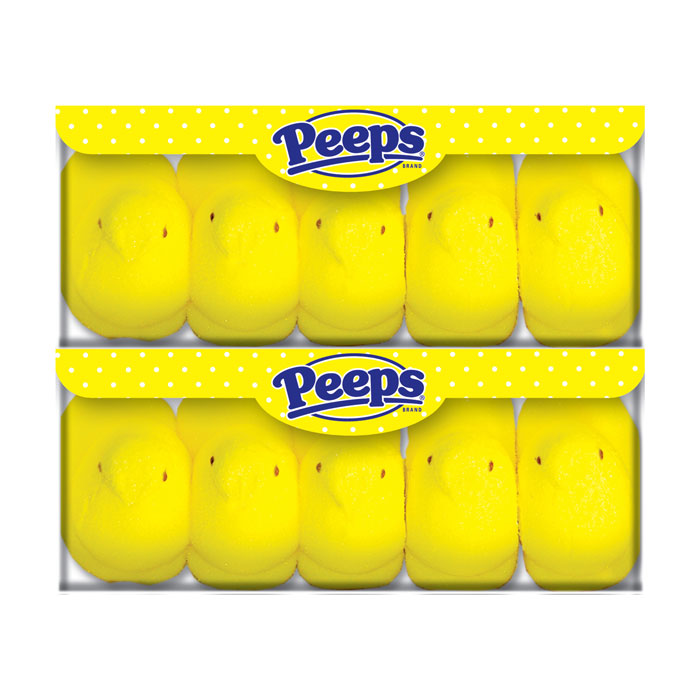Peeps are the marshmallow institutions of Easter. First made in 1953 by the Just Born company in Brooklyn, they’ve become, for better or for worse, a tradition at this time of year. According to the AARP (“11 Things You Didn’t Know About Peeps“), four out of five Peeps purchased are chicks, rather than bunnies, but they are produced at a rabbit-like rate: 2 billion Peeps per year, enough that they could circle the Earth three times, if they were put into orbit.
According to Mental Floss (“20 Delicious Facts About Peeps“):
For the past 20 years, no other non-chocolate Easter candy has been able to compete with the power of Peeps. With more than 1.5 billion of them consumed each spring, Peeps have topped the list of most popular Easter treats for two decades.
But for those who lean toward the chocolate, Peeps are available chocolate-covered.
Peeps can provide culinary inspiration – see the Peeps website for 60 Easter recipes (“Cookin with Peeps“).
The Washington Post holds an annual Peep Diorama contest – unfortunately, the deadline has passed for 2015, but you can see the 2014 winners here.
Laura Darling, managing director of Confirm not Conform and a Lent Madness celebrity blogger, writes about the theological and spiritual benefits of peep dioramas this week:
I’m not saying I invented the concept of peep dioramas. I’m just pointing out that there are witnesses to the fact that I brought a peep diorama of the beheading of John the Baptist to that fateful Easter dinner back in 1992; that seminary classmates can attest to the peep diorama parties of 1999 and 2000; and that the Washington Post contest has only been running since 2007. You be the judge.
She suggests it as an intergenerational activity:
Here’s the thing: I know it sounds silly and irreverent, but when I was making Biblical peep dioramas, I truly dug into the text to make sure I was getting the scene right. Well, as right as you can when you’re using marshmallows. But it made me think about the stories and how I saw them, how I interpreted them, who was there, what was the context.
This isn’t about artistic excellence. This is about finding yet another way to make Scripture our own. I’m no artist, so my dioramas never lived up to my image of what I hoped they would be, but in the process of trying, I gained insight into Scripture.
What is your position on Peeps? Share it (and any recipes, videos diorama photos) with Episcopal Cafe in the comments or on our Facebook page.
(For earlier Episcopal Cafe coverage of Peeps, see “Peeps, butterflies and resurrection,” April 2013.)
Posted by Cara Ellen Modisett

